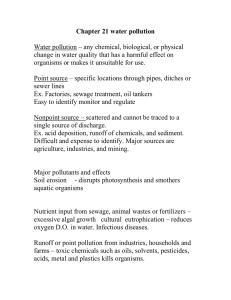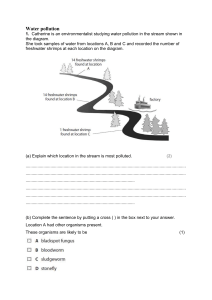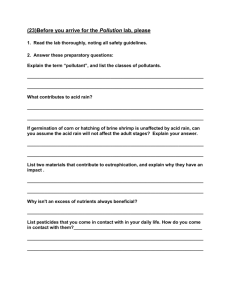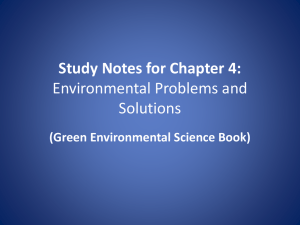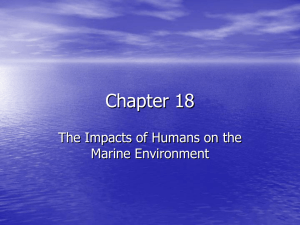Chapter 21 water pollution
advertisement
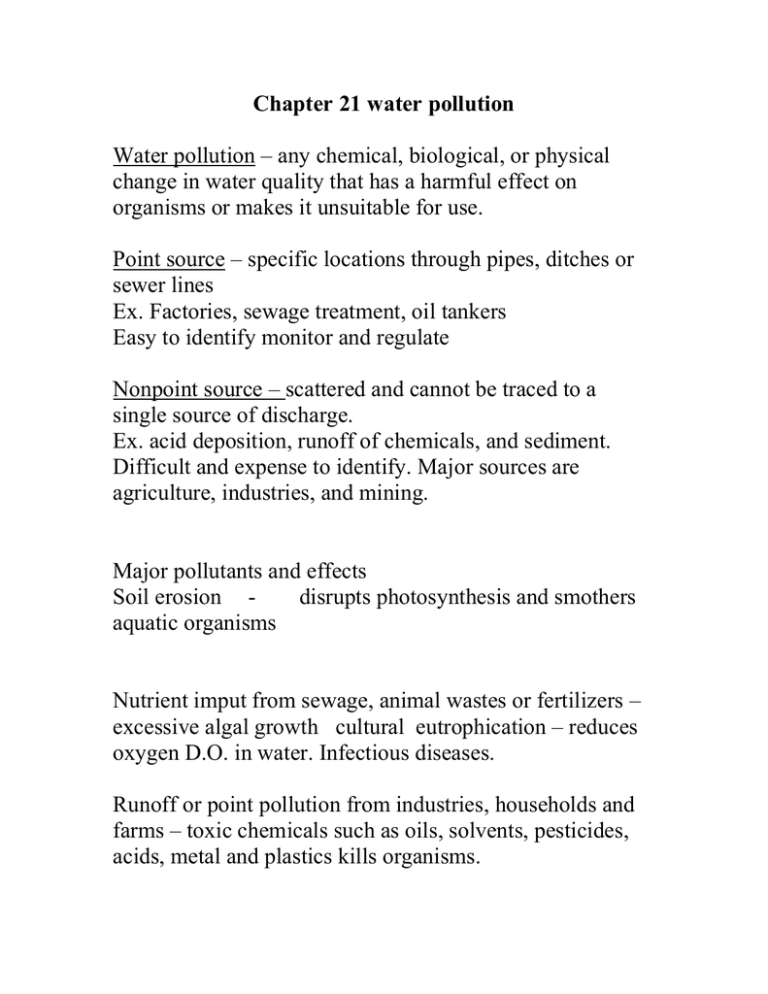
Chapter 21 water pollution Water pollution – any chemical, biological, or physical change in water quality that has a harmful effect on organisms or makes it unsuitable for use. Point source – specific locations through pipes, ditches or sewer lines Ex. Factories, sewage treatment, oil tankers Easy to identify monitor and regulate Nonpoint source – scattered and cannot be traced to a single source of discharge. Ex. acid deposition, runoff of chemicals, and sediment. Difficult and expense to identify. Major sources are agriculture, industries, and mining. Major pollutants and effects Soil erosion disrupts photosynthesis and smothers aquatic organisms Nutrient imput from sewage, animal wastes or fertilizers – excessive algal growth cultural eutrophication – reduces oxygen D.O. in water. Infectious diseases. Runoff or point pollution from industries, households and farms – toxic chemicals such as oils, solvents, pesticides, acids, metal and plastics kills organisms. Heat from electric power and industrial plants reduces D.O. - Two major water pollution problems 1) exposure to infectious diseases organisms from contaminated drinking water 2) not having enough water for effective sanitation. - 500 types of disease causing organisms that can come from water contaminated from human or animal waste Disease Amoebic dysentery Cholera Cryptosporidium Enteritis Giardiasis Infectious hepatitis Schistosomiasis Organism Effect Typhoid fever Fecal coliform bacteria measurements are a common way to measure water contaminated with fecal waste. (coliform is found in animal intestines – not diseases causing)
